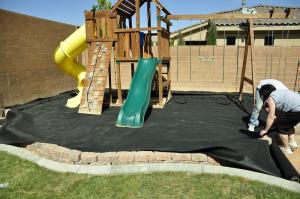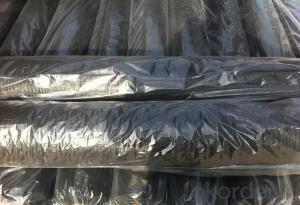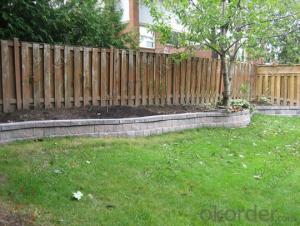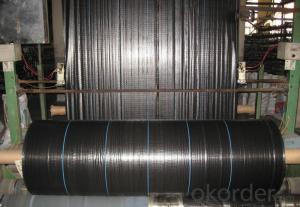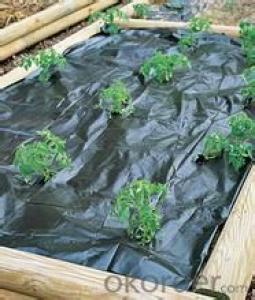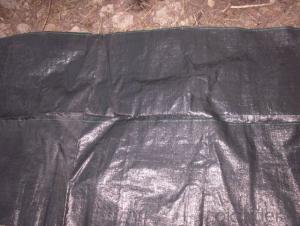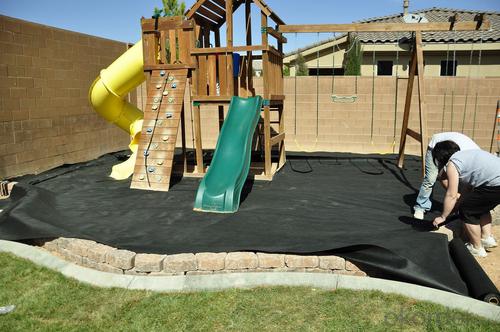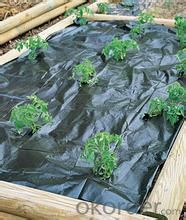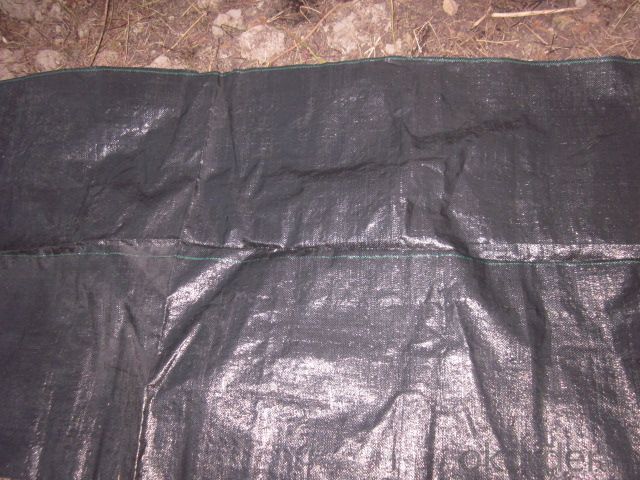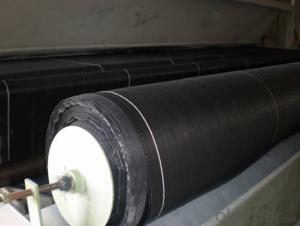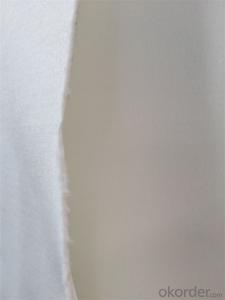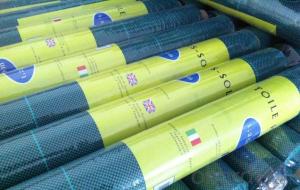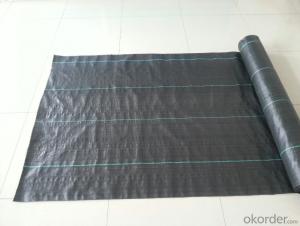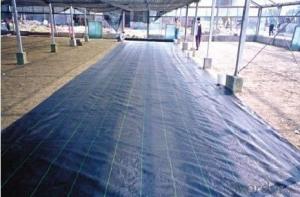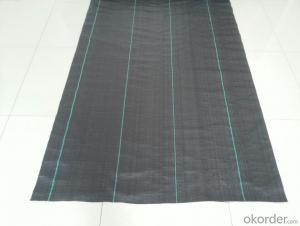Geotextile Road Fabric UV PP & PE Plastic Ground Cover Mesh and Weed Mat Product
- Loading Port:
- Qingdao
- Payment Terms:
- TT OR LC
- Min Order Qty:
- 500 m²
- Supply Capability:
- 500000 m²/month
OKorder Service Pledge
OKorder Financial Service
You Might Also Like
Product Description
The weed control mat is made of environmentally friendly raw materials, pp woven fabric. It used to prevent the growth of weed, without the use of potentially dangerous chemical sprays or labor intensive hoeing. Once installed, weed mat will continue providing protection for years without maintenance.
They are permeable fabrics, which allow air, water and nutrients to pass through, and designed to block out the sun to reduce photosynthesis and stop weed growth.
Specification
ROPERTY | ASTM TEST METHOD | Minimum Average | Minimum Average |
Mass per unit Area | ASTM D-5261 | 3.0 oz/yd2 | 100 g/m2 |
Grab Tensile | ASTM D-4632 | 145 lbs | 660 N |
Grab Elongation | ASTM D-4632 | 15% | 15% |
Trapezoid Tear | ASTM D-4533 | 55 lbs | 245 N |
Water Flow Rate | ASTM D-4491 | 5 gal/min/ft2 | 203 L/min/m2 |
UV Resistance | ASTM D-4355 | 70% @ 500 hrs | 70% @ 500 hrs |
ROLL DIMENSIONS | |||
Roll Width | 0.9m (3’) | 1.8m (6') | 2.7m (9') |
Roll Length | 91.4m (300’) | ||
Roll Weight | 8kgs (17lbs) | 16kgs (34lbs) | 24kgs (52bs) |
Features
1. Weed suppressant and drainage control landscaping fabric
2. Easy to use, Environmentally friendly
3. Allows water, air and nutrients through, suppressing weeds without the use of chemicals
4. Reduces the level of watering required due to the slower rate of water evaporation
Application
1. Excellent Weed Control
2. Moisture, fertilizers, air reach plants to allow for healthy soil
3. Good water and air permeability
4. Exceptional toughness and strength
5. Durable, tear-resistant; won't rot or mildew
6. Lightweight, easy to install, follows natural ground contours
7. Ideal for use in landscaped beds, under decks and walkways.
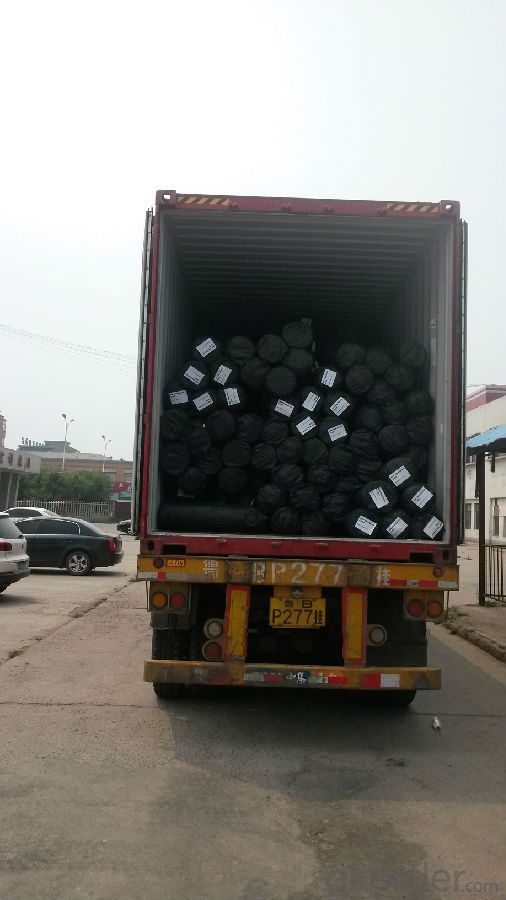

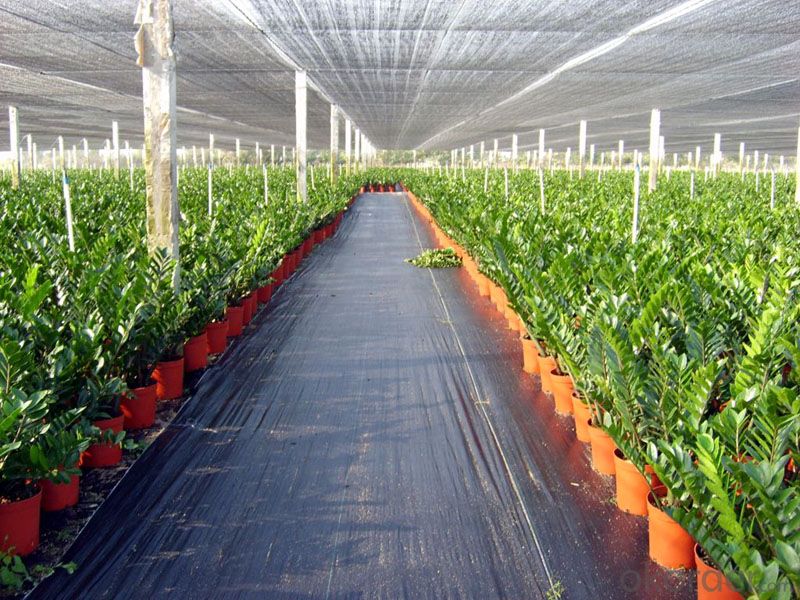
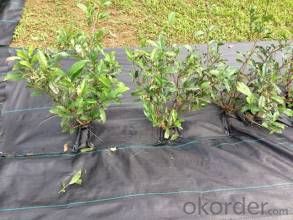
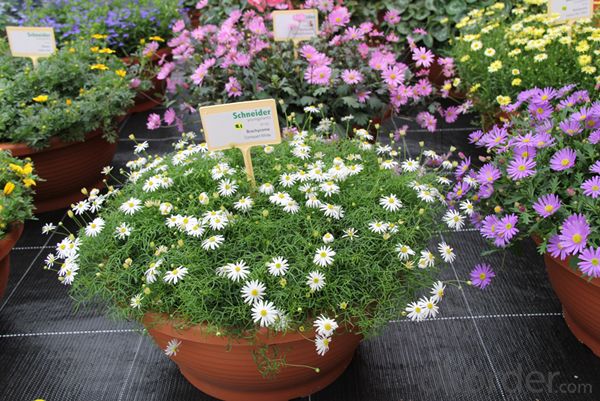
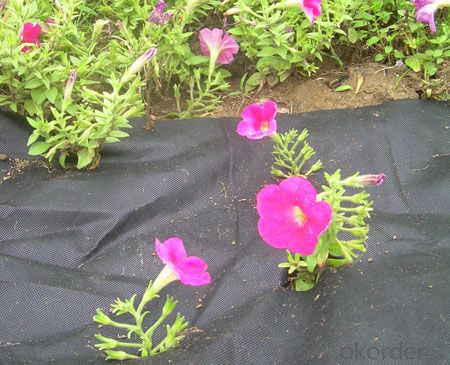
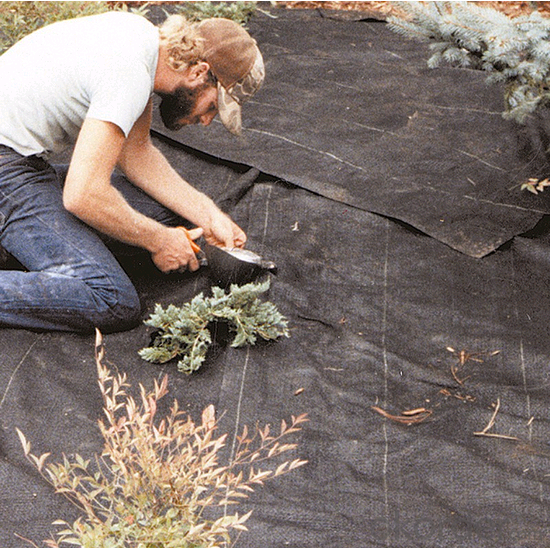
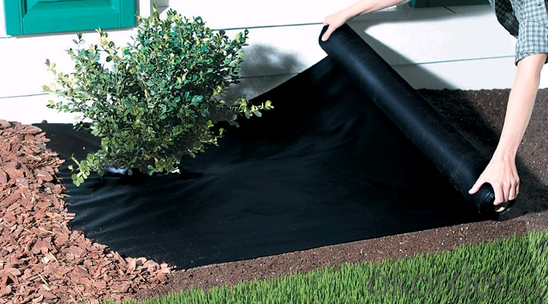
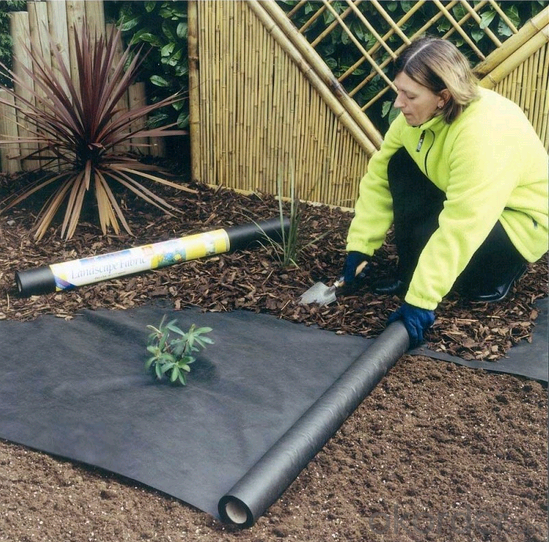
FAQ
1, Samples Policy
Samples are free, but the freight is on customers' charge
Samples will usually be sent out in one day.
2, Prices
As for the prices, we need you to provide us weight, color, width and usage so that
we can quote you best.
3, How to place an order?
Inquiry
Reply
Sample
Contract
Receiving deposit& production
Testing& Packing
Delivery
Receiving
- Q: How do geotextiles help with sediment control in construction sites?
- Geotextiles help with sediment control in construction sites by acting as a barrier that prevents soil erosion and sediment runoff. They are placed on the ground or slopes to stabilize the soil, allowing water to permeate through while trapping sediment particles. This helps to prevent sediment from being carried away by stormwater runoff, thereby reducing the risk of water pollution and ensuring compliance with environmental regulations.
- Q: Are geotextiles suitable for use in geocell mattress systems?
- Yes, geotextiles are suitable for use in geocell mattress systems. Geotextiles provide stability, erosion control, and reinforcement to the mattress system, making it an effective solution for soil stabilization and erosion prevention. They enhance the overall performance and durability of the geocell mattress system.
- Q: How are geotextiles affected by temperature variations?
- Geotextiles are generally resistant to temperature variations and can withstand a wide range of temperatures without significant impact on their performance. However, extreme temperature fluctuations, especially rapid changes, can potentially cause expansion or contraction of the geotextile material. This may lead to changes in its physical properties, such as reduced tensile strength or altered permeability. Overall, while temperature variations can have some effect on geotextiles, it is typically minimal and does not compromise their functionality significantly.
- Q: Filtering geotextile calculation
- Professional advice manufacturers, music built
- Q: Waterproof geotextile how much money per square meter
- This material has a lot of different quality, there are many different requirements, the price from dozens of pieces to more than 100 pieces between.
- Q: Are geotextiles suitable for use in chemical containment facilities?
- Geotextiles are generally not suitable for use in chemical containment facilities as they do not provide adequate chemical resistance.
- Q: Eva waterproof board and ecb waterproof board What is the difference between the two
- Both are waterproof panels, can be used for highway, railway tunnel seepage, but the product material is different, the appearance is not the same. EVA waterproof board there are two conventional, one is a simple EVA waterproof board without composite geotextile, the other is a combination of geotextile with the EVA waterproof board. Two collectively referred to as EVA waterproof board are tunnel waterproof board, is the main material of the tunnel seepage. ECB waterproof board there are two conventional, one is a simple white or black ECB waterproof board, the other is with self-adhesive asphalt waterproofing membrane. Both can be used for tunnel seepage.
- Q: What are the key properties to consider when evaluating geotextiles?
- When evaluating geotextiles, key properties to consider include strength, permeability, durability, and compatibility with the surrounding environment.
- Q: Ask geotextile factory in the use of geotextile aperture detector detection method which?
- Hello, geotextile detection method in GB / T and GB / T geotextile aperture in the introduction, you can look at these two standards. The first is geotextile pore size detection wet sieve method, the second is geotextile aperture detection dry sieve method. As the name suggests the first of these two methods is the participation of water, the other is basically the same, are placed in a single layer of geotextile standard small particles, through the vibration to detect the size of the leakage of particles to determine the geotextile pore size size. The difference is that the first standard in the need for continuous water on the particles, so the calculation method are also different. Specific detailed distinctions You can search these two criteria separately.
- Q: How do geotextiles contribute to the performance of geogrid-reinforced slopes?
- Geotextiles contribute to the performance of geogrid-reinforced slopes by providing separation, filtration, and reinforcement. They act as a barrier between the soil layers, preventing the mixing of different materials and maintaining the integrity of the slope. Geotextiles also help with filtration by allowing water to pass through while preventing the movement of fine particles, which can clog the geogrid. Additionally, geotextiles enhance the reinforcement provided by geogrids by distributing the load and reducing localized stress concentrations, improving the overall stability and performance of the slopes.
Send your message to us
Geotextile Road Fabric UV PP & PE Plastic Ground Cover Mesh and Weed Mat Product
- Loading Port:
- Qingdao
- Payment Terms:
- TT OR LC
- Min Order Qty:
- 500 m²
- Supply Capability:
- 500000 m²/month
OKorder Service Pledge
OKorder Financial Service
Similar products
Hot products
Hot Searches
Related keywords
